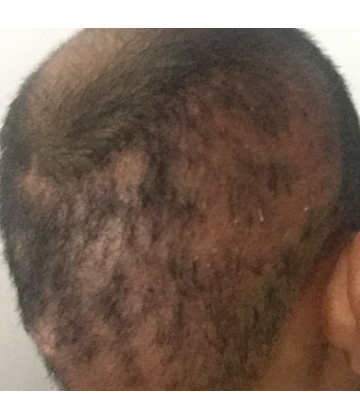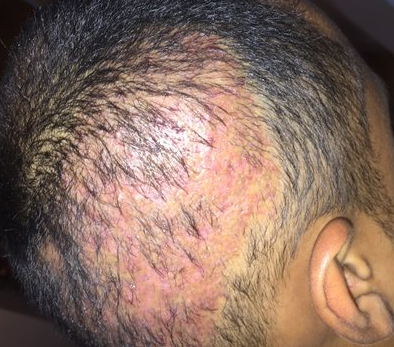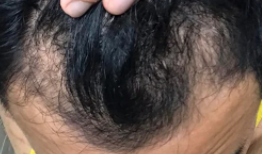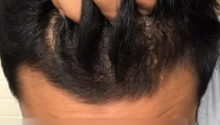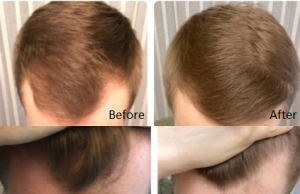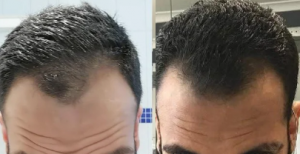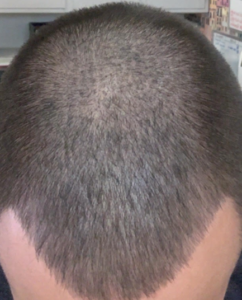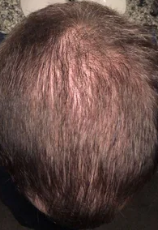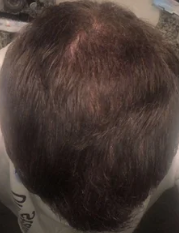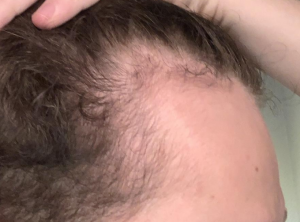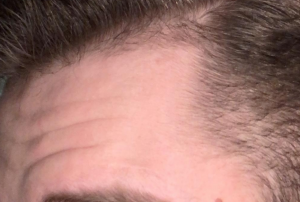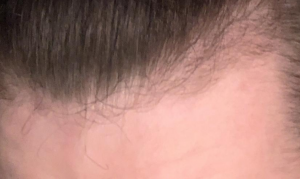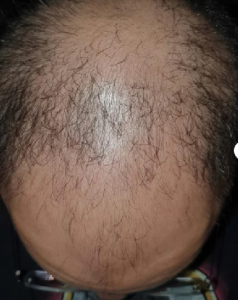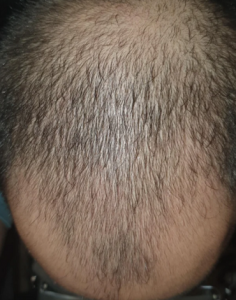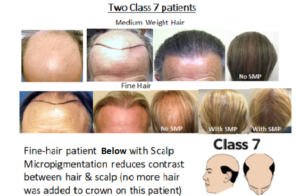What does that mean in terms of my donor area as I had 2000 grafts?
The grafts used from the donor area are lost forever. There is no regeneration of the donor area Most people do not deplete the donor area in a single hair transplant. I would certainly go back to speak with your doctor and ask your doctor why it failed. I can’t give you any explanation other than to say that most failed hair transplants, in the absence of dermatological autoimmune diseases, are technical in nature. A 2,000 graft FUE procedure can be 30 percent of the average Caucasian’s donor supply and 40% percent for Asians as they tend to have less overall hair. From the picture below, it looks like your donor area has been maxed-out and FUE would not be possible going forward based upon what is seen in this picture showing very significant donor site depletion. To me, this reflects that you had a significantly lower than normal donor hair density before this process was started. Your surgeon should have told you this before he recommended FUE. Now with your donor area so depleted and a failed hair transplant and a see-through donor area which will not go away, you don’t have many options. Any more FUEs will only make it worse and this donor area can’t possibly yield enough hair to give you any reasonable transplant result. The only solution to this problem is the use of Scalp Micropigmentation which will make your donor area ‘look’ normal and it also might help the recipient area but you would have to see an expert in this area to fond out more about your options. See here for the limits for FUE surgery defined in one of my previous post in the Hair Transplant Forum: https://baldingblog.com/2017/07/21/many-fue-grafts-many-fues-grafts-one-know-safe-limits/ and here for information on Scalp Micropigmentation: https://scalpmicropigmentation.com/
More and more patients are experiencing over zealous surgeons who take out too many grafts from their donor area in doing FUE. I know that many patients want a lot a grafts so that they can get their hair back as quickly as possible, but pushing the envelope is a real problem as many men, who have donor densities that are not high, get this type of result and eventually may become bald in the back of their heads. If some of the hair does not recover (some of what we see is the result of shock loss), then the only option to treat this is scalp micropigmentation (https://scalpmicropigmentation.com/scar-covering/). I have discussed the limitations of FUE in previous posts here: https://baldingblog.com/2017/07/21/many-fue-grafts-many-fues-grafts-one-know-safe-limits/
This is a terrible design of a hair transplant, an upside down heard. No body balds this way so I can’t imagine what the person who did this had in mind. Add ot the terrible design is the cereal looking granular recipient sites. Again, I feel sorry for this patient.
It is my best interest to continue with finasteride, Rogaine and microneedling however, I’m a bit concerned as to whether fin is losing efficiency or so. I am wanting to get a hair transplant in the nearby future. It is my intention to have the FUE procedure and have SMP to add to the density once the results had healed.
Thanks for writing to me. Your results from finasteride and microneedling are fantastic. At 20 years old, you have achieved the goal and I would continue to do all three (minoxidil, finasteride and microneedling once a week) with the hope that this will continue to improve your situation. At 20 there is no reason to do a hair transplant and if you are lucky and the finasteride and minoxidil with occasional microneedling holds on to your hair, you may not need a hair transplant for years to come. Read this post: https://baldingblog.com/22-year-old-received-a-hair-transplant-of-2800-grafts-from-reddit/
What are the chances the regrowth I have from microneedling my scalp is “permanent”. I have diffuse thinning and microneedling has given me regrowth without any topicals.
I am fairly certain that these new hairs will not be permanent. They may last as long as a single hair cycle which is usually 2-3 years for the average young male. This is an educated guess, of course.
It is not unusual for the hairline to mature and lose the frontal 3/4 inch upward. I call this a maturing hairline but it is not always uniform and it can start in the center anytime between the ages of 18-29 years. This can also be a sign of genetic balding but your hairline looks flat and low. You should see a doctor to determine just where this is coming from. The doctor will perform both a HAIRCHECK test of your entire scalp and miniaturization studies of your frontal hairline.
Page 189 of 1239



